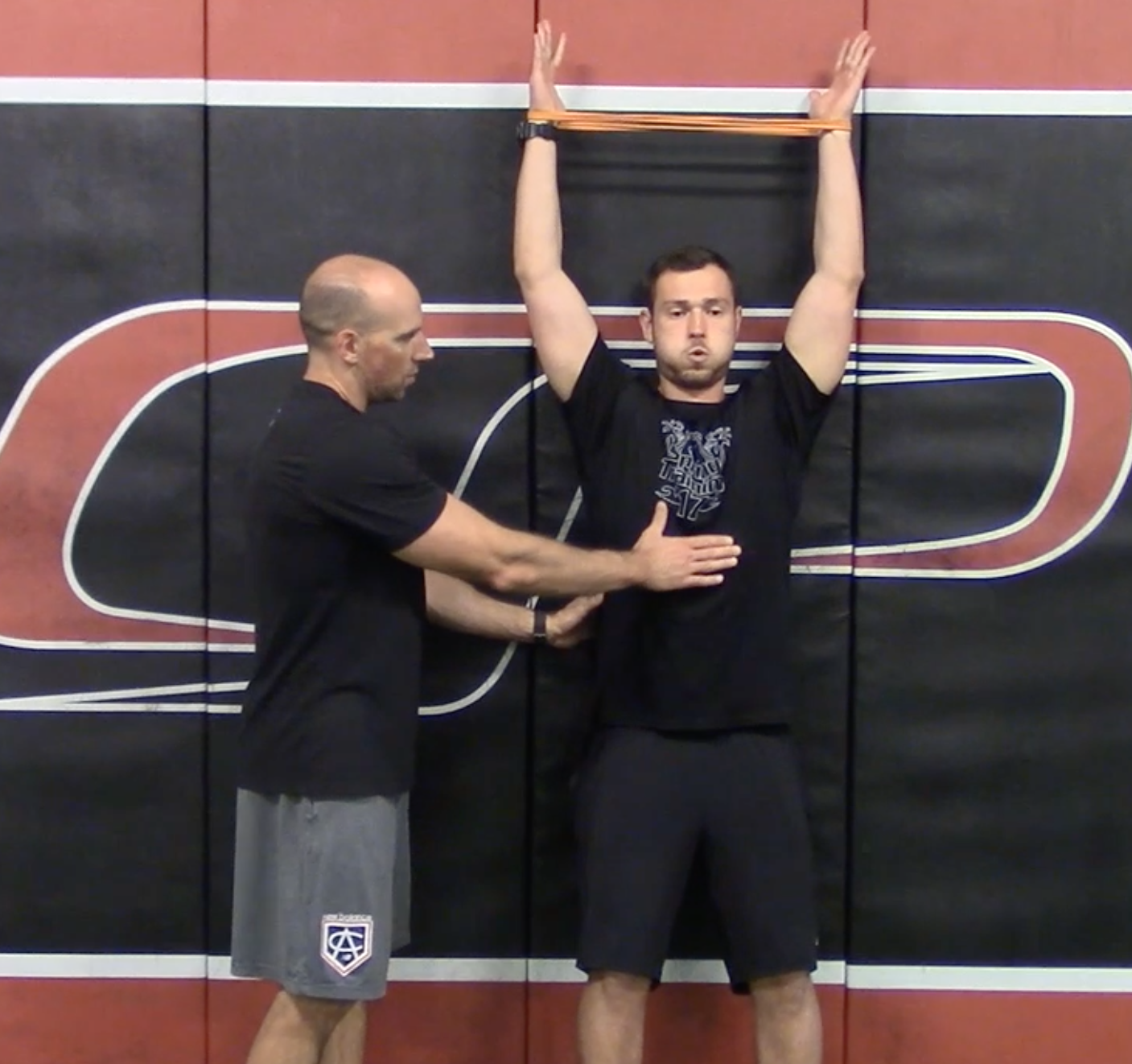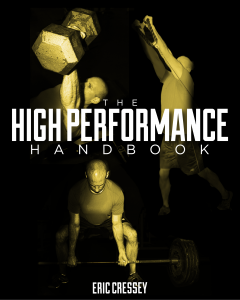
Why You Struggle to Train Overhead – and What to Do About It
A while back, I posted the following on my Facebook page:
“Fill in the Blank: ________ is the exercise that gives me the most trouble in the gym.”
I’ve received 132 replies. Of that 132, 21 were people trying to be funny on the internet, so they’re thrown out the window – which leaves us with 111 replies. Not surprisingly, more respondents highlighted trouble with an overhead movement – snatch, military press, overhead squat, etc. – than any other category of strength exercise. In fact, it was one-third of people (37/111). In a distant second place was squat variations, which comprised 19% of responses (21/111).
Digging a bit deeper, the most common “subcategory” of this overhead movements trend was the snatch, with 12 people saying that it was the exercise that gave them the most trouble. It shouldn’t come as any surprise that the most high velocity movement in this category would be the most commonly cited, but what should surprise you is the sheer volume of people who are woefully unprepared to train overhead who try to fit a round peg in a square hole in this regard.
If you can’t get your arms overhead correctly at rest, do you really think you’ll be able to do it when you’re in panic mode just trying to catch a barbell you’ve launched over your head? Heck no! You’re going to hyperextend your lower back and slip into forward head posture. And, chances are that you’ll have already set up with an ultra wide grip to ensure that you can catch the bar with as little shoulder mobility as possible.
Before we proceed, let’s cover this classic presentation in more detail. Here’s a video I originally filmed for Wil Fleming.
(Side note: if you’re trying to learn to Olympic lift, definitely check out Wil’s fantastic DVD on the topic: Complete Olympic Lifting.)
The people who struggle learn the snatch – or really perform any overhead lift – are generally adults. Why? Because they’ve lost a fundamental movement pattern – overhead reaching – that everyone should have! Barring some developmental disorder, everyone has the ability to get the arms overhead when they are kids, whether it’s to reach for the cookie jar or to climb on the jungle gym at the playground.
Think about it: the overwhelming majority of teenagers can learn to Olympic lift in a matter of a few weeks or months. And, it’s been discussed time and time again how Eastern European kids would practice Olympic lifting patterns with broomsticks to maintain these crucial movement patterns to prepare for the day when they’d load them up. They understood this very important lesson:
[bctt tweet=”It’s much easier to maintain mobility than it is to lose it and try to get it back.”]
This isn’t just because tissues can become fundamentally short and degenerative. And, it’s not just because resting posture becomes more aberrant or individuals accumulate more wear and tear. It has a lot to do with the plasticity of the human brain. Just like it’s a lot easier to train a puppy than it is to teach an old dog new tricks, it’s much easier to shape the neuromuscular patterning of a developing child or teenager than it is to change the more concrete patterns of an adult with poor movement quality – especially when that adult insists on trying to learn the pattern with 65 pounds or more on the barbell (rather than just a broomstick) – and after years of sitting at a computer.
Really, we’re just reaping what we’ve sowed over the past 15-20 years. The new generation of adults spent more time on Instant Messenger than on the basketball court. Fewer kids than ever did manual labor in their teenage years. It became cooler to get an iPhone than a bike for your birthday. And, society pared back on physical education classes and recess time. While this was happening, kids got more specialized on the sports front, meaning they were exposed to even less variety in movements when they actually did get exercise. Our health has obviously suffered, but so has our movement quality.
Before I get off on too much of a tangent, though, let’s circle back to the back-to-wall shoulder flexion test from the video I posted earlier. If you failed it miserably, don’t worry! The “good” thing about struggling to get overhead correctly is that you know that there are a number of different things that could be limiting your ability to get there:
- Limited shoulder flexion (short/stiff lats, long head of triceps, teres major, inferior capsule)
- Limited shoulder external rotation (short/stiff pecs, lats, subscapularis)
- Lack of scapular upward rotation (weakness of lower traps, upper traps, and/or serratus anterior; and dominance of levator scapula, rhomboids, and pec minor)
- Poor thoracic spine extension
- Lack of anterior core stiffness
With all these potential problems, chances are that improving each just a little bit will yield big results, especially since they interact with each other on a number of fronts. For instance, if you reduce stiffness in your lats, your anterior core won’t have to work quite as hard to overpower that stiffness, so its relative stiffness improves.
Below, you’ll find six videos of exercises you’ll want to incorporate in your warm-ups daily to gradually build up your range-of-motion and overhead stability. Be sure to perform them in this order:
1. Supine Alternating Shoulder Flexion on Doubled Tennis Ball: 8 reps/side
(Note: perform the rest of your foam rolling series, too – and make sure to spend some extra time on the lats and pecs.)
2. Bench T-Spine Mobilizations: 8 reps
3. Side-Lying Windmills: 8 reps/side
4. Dead Bugs: 8 reps/side
5. Back to Wall Shoulder Flexion (it’s a test and a training exercise): 8 reps
6. Wall Slides with Upward Rotation and Lift-off: 8 reps
Do these drills each day during your warm-ups and – if schedule allows – another time during the day. You’ll find that it’ll be much easier to get overhead in a matter of days and weeks. In the meantime, gradually build toward your ultimate goal with some regressions in your strength training program. You can use a landmine press instead of a true overhead press, and cleans or high pulls in place of snatches. Eventually, once your body is ready to tackle these more complex movements, you’ll find that learning them will be much easier.
Looking for more great self-assessment and mobility tips like these – as part of a comprehensive strength and conditioning program? Check out my resource, The High Performance Handbook, which features versatile strength and conditioning programs you can modify to suit your needs.



